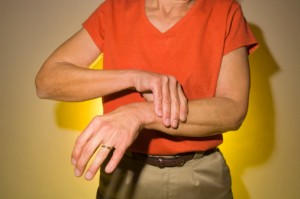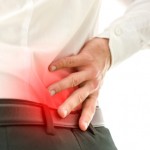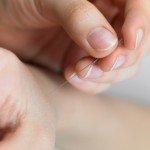

 Reiter’s syndrome – reactive arthritis – is an inflammatory arthritis that affects joints, eyes, urethra, and the skin. The swelling in reactive arthritis is commonly caused by an infection in another part of the body, most commonly the genitals, urinary tract or intestines.
Reiter’s syndrome – reactive arthritis – is an inflammatory arthritis that affects joints, eyes, urethra, and the skin. The swelling in reactive arthritis is commonly caused by an infection in another part of the body, most commonly the genitals, urinary tract or intestines.
Reiter’s syndrome is actually a specific form of reactive arthritis that primarily affects the eyes, urethra and joints. It most commonly affects sexually active males in their 20s to 40s. Individuals with HIV are at higher risk of developing Reiter’s syndrome.
The most common cause of Reiter’s syndrome is a bacterial infection. Bacterial infections that can lead to Reiter’s syndrome are salmonella, shigella, Yersinia, Campylobacter and chlamydia.
Chlamydia is a sexually transmitted disease that can affect both men and women. It is spread through sexual intercourse.
If chlamydia is not treated, it can become a serious health issue and cause detrimental effects to the female reproduction system or lead to a deadly ectopic pregnancy – where the pregnancy occurs outside of the womb.
Aside from bacterial infections, many cases of Reiter’s syndrome result from a genetic predisposition – the HLA-B27 gene has been found to cause 80 percent of Reiter’s syndrome cases.
Symptoms of Reiter’s syndrome are:
 Mouth ulcers
Mouth ulcersCommon treatment methods of Reiter’s syndrome involve drug therapies, including antibiotics, nonsteroidal anti-inflammatory drugs (NSAIDs), corticosteroids, drugs which suppress the immune system, and tumor necrosis factor inhibitors. All of these drug therapies work to reduce or suppress inflammation in the body.
Physical therapy, too, may be utilized to boost joint function.
Aside from medical intervention, alternative remedies may be useful to help complement conventional treatment. Alternative remedies for Reiter’s syndrome include:
 Reduce your intake of saturated fat.
Reduce your intake of saturated fat.Unlike other forms of arthritis, reactive arthritis is treatable and recovery can occur within four months time. If left untreated, complications can emerge and lead to inflammation of the heart and spine, glaucoma, feet abnormalities and an accumulation of fluid in the lungs.
Although genes plays a large role in reactive arthritis, it can be better prevented by practicing safe sex (i.e. wearing a condom) and ensuring food is cooked, handled and stored properly.
Senior citizens and STDs – not so uncommon
One of the last things you might think about when you think of the aging population is sexually transmitted diseases. But according to a recent study, this is a much more common issue than you might be willing to admit, and damage is beginning to be seen. Continue reading…
Preventing arthritis in hands with exercise and natural remedies
Preventing arthritis in your hands can be achieved with exercise and natural remedies. Arthritis is a condition that causes inflammation of the joints. The most common form of arthritis is osteoarthritis, which wears out the protective cartilage found between the joints. When cartilage is worn down it allows the bones to rub together, which can lead to deformities and structural changes. Continue reading…
Copyright © www.orthopaedics.win Bone Health All Rights Reserved